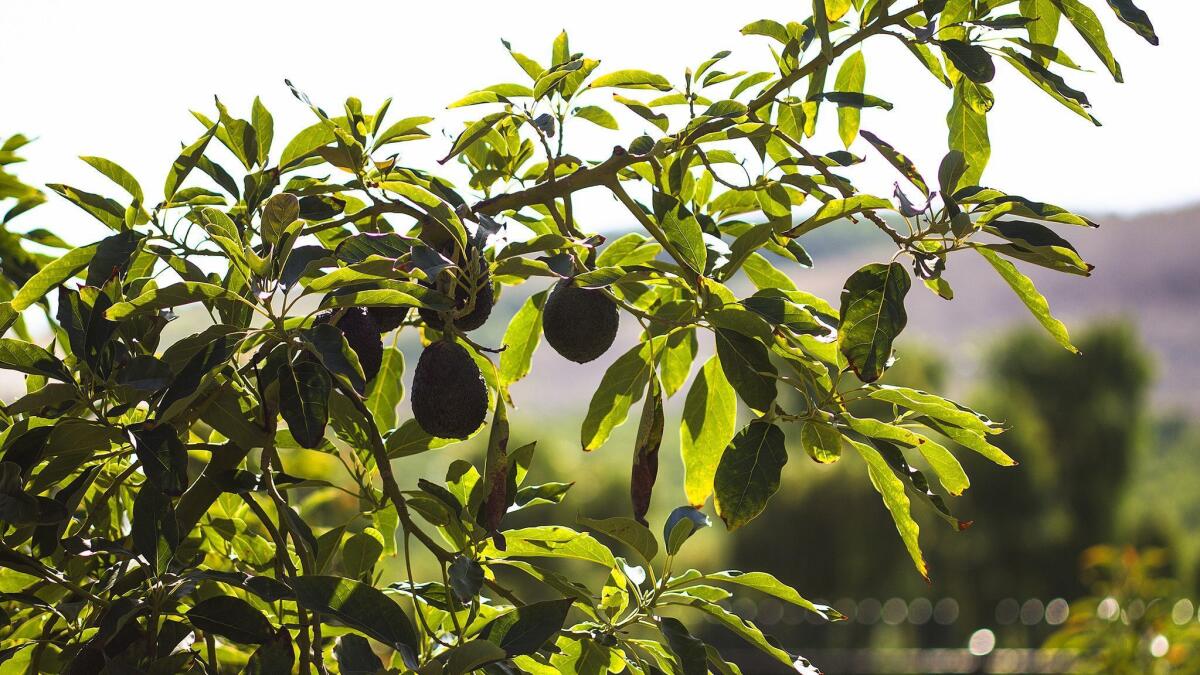City-provided fruit trees are a big hit in Long Beach

- Share via
City tree-planting offers aren’t unusual, but Long Beach has found a winning twist in its new fruit-tree planting program.
The offer: A city crew will plant one fruit tree — lime, lemon, orange, peach, pomegranate or avocado — in the front yard of interested Long Beach residents, with a priority going to yards in the western, central and northern parts of the community. Renters can apply, but the property owner will need to sign off on the project.
The city’s Office of Sustainability sees it as a win-win, with new trees providing shade and food in neighborhoods with the greatest need, and income for the youths hired to assist with planting.
Larry Rich, the city’s sustainability coordinator, envisions community building too, with neighbors swapping fruit as their trees begin producing.
“It’s one of the angles of sustainability,” Rich said. “We’re always looking for things the natural world provides that can help the city be more environmentally friendly.”
But it’s always a dicey thing with a vision like this, so the city was cautious, getting funding for 400 fruit trees to be planted over 2½ years. The rest of the grant, a total of $1.26 million from two state agencies, went to plant 3,600 regular (nonfruit) trees around the city.
Prudent, yes, but as it turns out, the public has been wildly enthusiastic. The offer went out Jan. 22, and six days later, the city already had 500 applications.
Top request: avocado trees, with semi-dwarf lemons coming in second and peach trees third.
“Am I surprised? Kind of, but not really,” Rich said. “We weren’t sure how it was going to go, but I guess we’ve demonstrated that fruit trees get people more interested in planting trees.”
The trick now is satisfying the demand. The city is still accepting applications, Rich said, because it’s obligated to plant first in the priority areas identified in the grant. As of Jan. 28, only about 175 of the 500 applications had come from those areas, he added. Plantings are expected to start by late February or early March.
Rich said applications will be rejected if the request is for trees in back yards, parkways (the strip between the sidewalk and street) or pots, as none of those qualifies for the program. The city doesn’t allow fruit trees in parkways because it doesn’t want fruit dropping on streets or cars. And it wants the fruit trees in front yards to encourage others to do the same, Rich said.
Once some trees have been planted, Rich said officials will seek to adjust the grant amount or request additional funds in 2020. Ultimately, the city wants to satisfy every request for a front-yard fruit tree, but it may take a year or longer to meet the demand.
If you don’t want to wait, Rich said, you can always buy your own. “They’re not super expensive,” he added.
Several jurisdictions and nonprofits in Southern California have tree programs, but Long Beach appears to be the only one that offers to plant fruit trees. Call your city hall to see what’s available in your community.
More to Read
Sign up for The Wild
We’ll help you find the best places to hike, bike and run, as well as the perfect silent spots for meditation and yoga.
You may occasionally receive promotional content from the Los Angeles Times.











